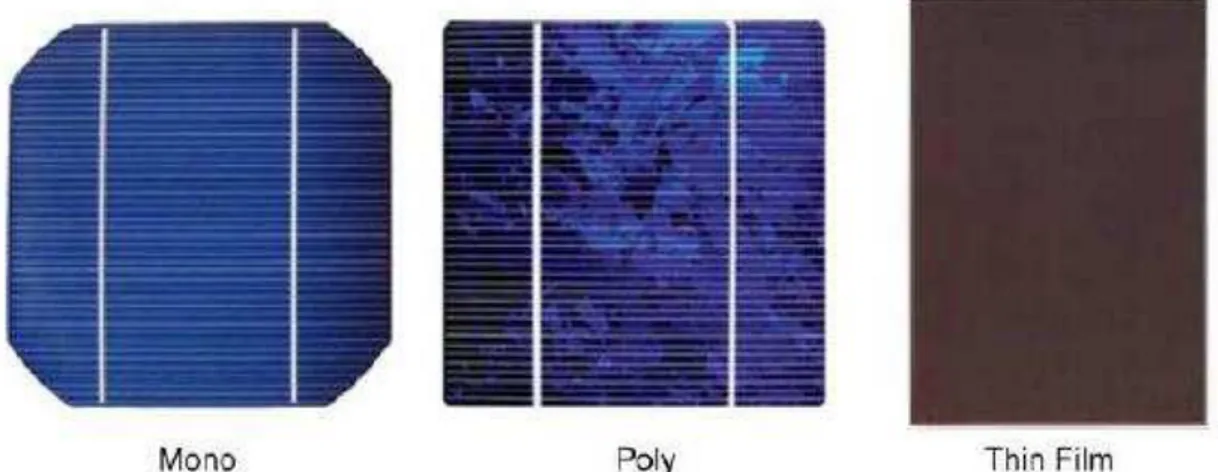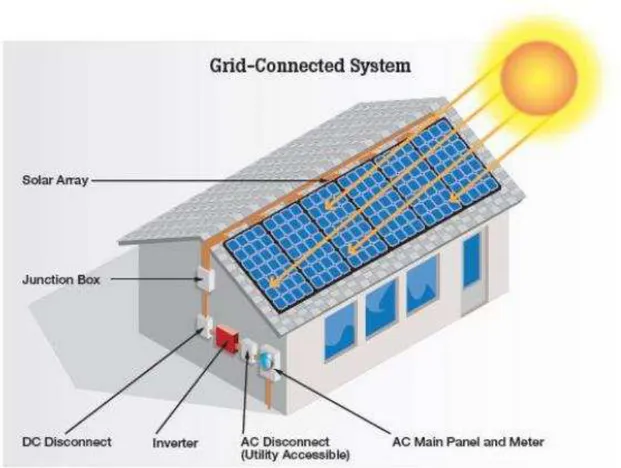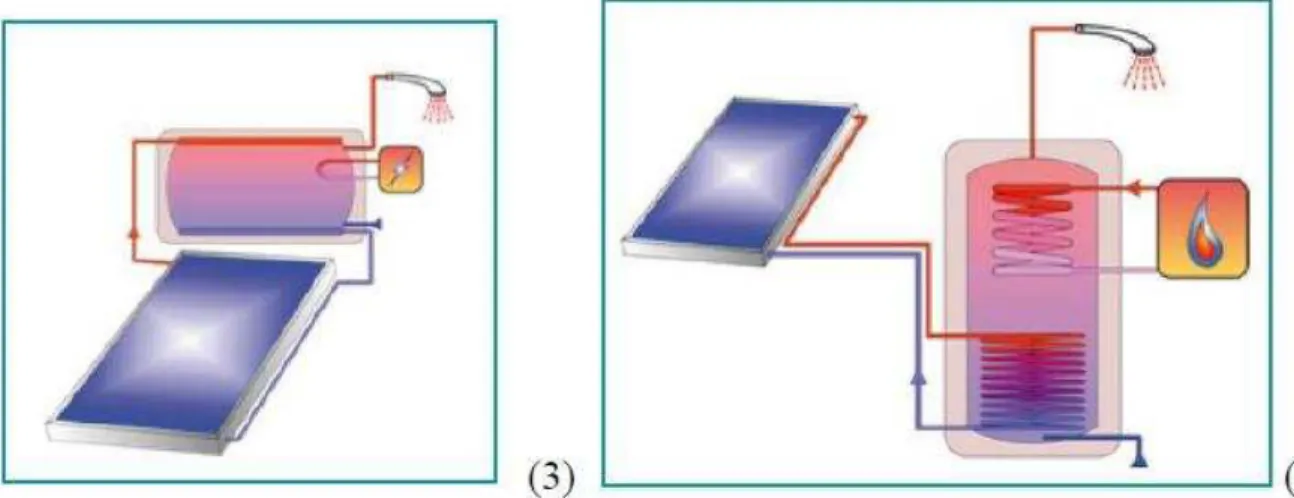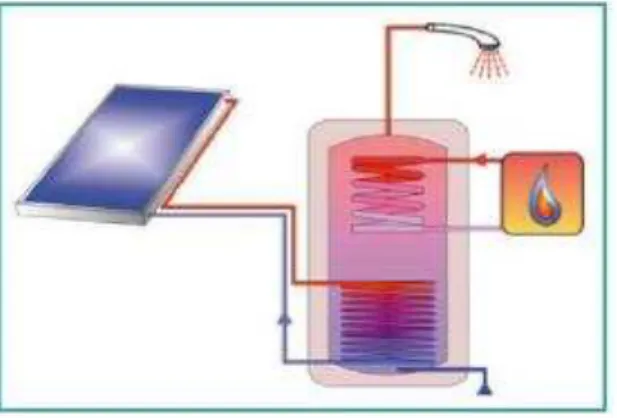Active Solar Energy Use Approaching Sustainability
NikouJavadiEshkalak
1*, Seyedmehran Shahidipour
2, AmirhosseinKarimizadeh
31,
PhD Candidate,Department of Architecture, Eastern Mediterranean University, Famagusta T.R. North Cyprus via Mersin 10, Turkey
2, 3
M.ScStudent,Department of Architecture, Eastern Mediterranean University, Famagusta T.R. North Cyprus via Mersin 10, Turkey
Abstract
Nowadays, sustainability becomes one of the most important issues that should be taken into consideration in various fields especially in architecture. Our responsibility for the future generation insinuates us for using renewable energy sources and integrating this pioneer system into the built environment. Although the world is facing problems of fossil fuel resources but unfortunately Utilization of solar energy received limited attention until recently. However, Integrating of active solar energy devices into the building envelopes is one of the good strategies for heat producing and power generating simultaneously from the same building. This paper discusses some characteristics about integration of PV s and solar thermal collectors. Therefore, the aim of this paper is to find suitable and possible ways of PV s and solar thermal collector's building integration in order to increasing energy efficiency without any impact on architectural features. \
Key words:
active solar system, building integration, power supply, hot water supply, energy efficiencyI.
Introduction
21st century introduced as the age of using solar energy. (Thomas et al., 2001). There are several reasons for applying renewable energy technologies especially solar energy. Generally, using solar energy has some significant preferences such as availability, technological quality, and economic feasibility and Etc. Although, applying solar systems have high initial cost but it is solvable by selecting appropriate systems according to the characteristics of buildings. (URL 5) Integrating of photovoltaic and solar thermal collectors into the building envelopes is one of the good strategies for heat producing and power generating simultaneously from the same building. By integration of PV/solar thermal collectors into building, they become part of building components. An important factor in Success of solar device integration into building is related to the proficiency of a team on how to design and integrate these pioneer systems.(Hestnes, 1999). Consequently, it is so important in design process to make a balance and creating harmony between solar device's integration with existing structure and materials. On the other hand, one of main aspects in solar device integration into building is related to the type of building; existing building or new constructed ones. Overall, according to importance of aesthetical aspects of building, using PV s and solar thermal collectors can be a good option for fulfill the aesthetic preferences. (Probst and Roecker, 2011). Extend our current lifestyle and consumption level to the rest of humanity is not possible -our planet cannot supply the required resources withoutbecoming unlivable. We must change our consumption level, even if this
means revolutionizing our energy use. Today, our energy behavior must change:
•Reduce our energy requirements to ensure a
sustainable development
• Adapt energy production to specific energy use for
overall energy efficiency
•Progressively reduce our consumption of fossil
fuels, condemned by the lack of resources and high pollution
II.
Power supply with solar energy
High cost of energy consumption and environmental issues are two main factors to encourage experts and governments to replace solar energy with fossil fuel. PV s generate clean electricity by changing solar radiation to power. Produced power by solar energy can be used in different types of buildings such as residential, commercial and Etc. PV panels are categorized according to their power generation under sun position and even temperature. According to this preference, designers can evaluate the number of panels that should be integrated into the building to fulfill its power requirement. Solar panels are assigned a rating in watts based on the maximum power they can produce under sun position and even temperature. You can use this rated output to estimate the number of panels you'll need to meet some or all of your needs. However, roof orientation and tilt are the main factors that affect the amount of energy produced by solar devices, although there are some secondary factors such as environmental conditions and panel characteristics. (Breyer,2009).
III.
3 Photovoltaic integration into
buildings
By integration of PV into building, they become part of building components. An important factor in Success of solar device integration into building is related to the proficiency of a team on how to design and integrate these pioneer systems.(Hestnes, 1999). Generally, choosing a system or a combination of systems are not important in design process but the point is that how these devices can improve the quality of buildings from energy efficiency perspective. Using of solar energy in building design can be the first step for sustainable development promotion. There are some criteria that should be considered for optimizing solar energy usage. (Table 1) However, the use of PV s is one of the energy strategies for the buildings but each project has its own characteristics that should be taken into
consideration according to desired goal. For integrating PV s following main factors should be considered:
The location of building: The amount of solar gain is considerable factor in high performance of PV s, so the good location of building to sun is so important.
The amount of Usage: The building type should be taken into consideration in term of electrical requirement; it means that PV installation types are different from case to case.
The Design process: PVs affect the buildings in several aspects such as form and aesthetics. In results, design process should provide all groups- users, owners and designers- satisfaction. (Fordham, 1999).
Life cycle cost Construction cost Annual operation cost Annual maintenance cost Resource use Annual electricity
Annual fuels Annual water
Construction materials Land
Environmental C02-emissions from construction loading Annual C02 emissions from operation
S02-ernissions from construction NOx emission from construction Annual NOx emissions from operation Architectural quality Identity
Scale/proportion Intezritv/coherence
Integration in urban context Indoor quality Air quality
Lighting quality Thermal quality Acoustic quality Functionality Functionality
Flexibility Maintainability Public relations value
Tablel. The criteria and sub-criteria used in IEA Task 23.(Hestnes, 1999)
3.1 Flexibility in design
Photovoltaic panels can be integrated in buildings in many ways: for roofing, facades or as shading. (Table 2) They can form part of the actual structure of a wall, providing a waterproof shell, or positioned alongside it in order to provide shade from the sun. Photovoltaic can even act as a balustrade. They can often be found integrated into roofs and curtain walls, but more recently, photovoltaic have
by offering a further element of light which can be varied at will by the architect. In fact, the percentage of cover provided by the cells and their shape can be jointly decided by the architect and the manufacturer. Even better, the shade provided by photovoltaic cells for conservatories and greenhouses enables the
temperature to be controlled and prevents excessive heating, which makes semi-transparent panels an invaluable element in bio-climatic construction. They can also provide an innovative feature in the facade by making use of the double envelope principle. (OME report for GSWHUNEP-UNDP,2012)
Table 2: Building-integrated PV s. (Fordham, 1999).
design options. There are three main methods of PV integration into the buildings:
Roof-based systems.
• Facade systems.
• Sunshades and sunscreens."(Fordham, 1999).
3.2.1 Roof-based systems
There are several methods for PV integration into the roof of buildings. Using roof covering systems can reduce the cost in several ways because this way can reduce the amount of required building materials. Also, selecting appropriate types of PVs such as shingles or tiles for smallscale buildings can
be more suitable for roof covering. On the other hand, by transparent kinds of PVs can increase the quality of buildings in term of using day lighting in glass-covered areas such as. (Probst, et al, 2011). In addition, roofs have some attractive characteristics to be chosen for PV integration:
There is no shading problems
Inclined roof have a good opportunity to use solar radiation
From aesthetical and functional point of view are easier than wall integration (Table 3)
Table3: PV roof system. (Fordham, 1999).
3.2.2 Facade systems
Facades have a good opportunity for PV integrations. PV panels can be used as cladding
Table 4: PV types using in facades. (Fordham,1999).
3.3 Technique
Photovoltaic can help building supply their energy needs by generating electricity from sunlight. This electricity can be used on the spot or sold on to the grid.
3.3.1 Cells and Modules
The «photovoltaic effect», where a semiconductor generates a direct current (DC electricity) when exposed to light. Crystalline photovoltaic cells consist of a two layer semiconductor with a screen printed metallic network to collect the electrical current generated. Because the voltage generated by a single cell is low, cells are joined together inside a protective «sandwich » of toughened highly transparent glass and plastic (transparent or opaque) to create modules. These modules can then be incorporated into many common building elements as a glass panel of a given
transparency (double or triple glazed windows, glass facades, skylights...) suitable for structural applications, as an opaque glass element, or a classic photovoltaic module.(URL2) .
3.3.2 Cell technology
modules are created by the deposition of a thin layer of semiconductor onto a smooth homogenous surface (glass, metal... even flexible plastics!). The deposition process gives thin film modules a smooth black appearance. "Whilst thin film modules have a lower efficiency than crystalline cells, their
manufacture requires fewer semi-conductors and is cheaper per square meter. Thin film products are particularly well suited to industrial building facade and roof elements as well as other places where large surfaces need to be covered".(URL 2) (table 5)
Table 5: Efficiencies of different types of cells (Thomas and et al., 2001)
Figure 1: Types of photovoltaic cells, Source (URL 3)
3.3.3 Grid connected systems
Photovoltaic systems can be used with (grid-connected) or without (stand-alone) the utility grid. In Europe the fastest growing application is grid connected systems, because of the extended coverage of the utility grid, the flexibility of grid connected systems and the generally lower system costs involved. The photovoltaic system's direct current electricity (D.C.) is converted to alternating current (A.C) by an inverter, and is then injected into the electricity grid. The inverter ensures that the exported electricity has the same characteristics as the utility grid -generally a frequency of 50Hz at 230V. Other components, such as module wiring and electricity meters also form part of the system. Two basic
photovoltaic grid connection situations exist depending on the local legal framework
• Photovoltaic production supplies buildings needs and any excess production is fed into the grid
• The entire production is exported to the grid. Electricity fed into the grid can either be sold at the same price as the electricity bought from the grid (net metering) or at a different price (feed in tariff).
Figure 2.source (URL 1)
3.4 Optimal Production
Factors that influence the production of a photovoltaic system include the location, orientation and inclination of the system, temperature and shadowing. The ideal orientation and tilt to the photovoltaic modules will generally be due south at an angle of 30° to over 40°. However, a deviation from the ideal need not significantly reduce production -a south-east photovoltaic facade will lose just over 10% compared to an ideal system, whilst preserving the photovoltaic systems double use as a building element. An increased temperature reduce the efficiency of photovoltaic cells, and with their dark coloring a significant amount of solar energy is retained as heat, so adequate ventilation is essential. A module may only produce as much power as its least productive cell, so it is important that shadowing be minimized, or accounted for in the production estimates of a system. (URL 3)
IV.
Integration of solar thermal collector
Table 6: Solar thermal collectors' characteristic (OME report for GSWH-UNEP-UNDP,2012).
Table 7: solar thermal collector types used for water heating (URL 4)
The function of solar thermal collectors can be categorized in three main issues: (a) space heating; (b) space cooling; (c) domestic hot water.( URL5)
4.1 Solar water heating system types
Solar water heating systems can be categorized into active/passive and on the other hand direct/indirect systems. In an active system, circulation of fluid is
Table 8: Solar water heating system types' description (URL 4)
4.2 Active Solar Domestic Water and space heating
Domestic hot water system performance is like as space heating system. The application of space heating systems requires more space and devices to a target space. By increasing the collector area and the storage volume can optimize to 50% space heating demand. Thermosiphon systems mostly use for domestic hot water preparation. "These systems,
robust, efficient and easy to build, consist of a solar collector with a capacity between 0.7 and 2.1 kWth (between 1 and 3 m2)."( Stryi-Hipp, et al,2012) A thermosiphon system is based on the natural convection principle to circulate the heat transfer liquid between collector and storage. In this type of installation storage must be above the collector. (URL 5)
Figure 3: Solar thermal thermosiphon system for domestic hot water preparation
Solar thermal systems that produce heat for both domestic hot water and space heating are called 'combisystems'. Today, there is a wide range of systems in the market, type of collectors, storage,
controllers and hydraulic equipment. Selecting appropriate system from different aspects can help the owners to reduce the installation cost and increased energy efficiency simultaneously.
Figure 5: Solar thermal combi-system for domestic hot water preparation and space heating. (URL 4)
Figure6: The world's largest district heating plant with 25MWth installed capacity (36.000 m2) in Riadh is equipped with European collector technology. (OME report for GSWH-UNEP-UNDP,2012).
4.2.1 Direct Systems
The main circulation of water in this system is from the storage tank into collector. Also, this system has two types, namely: drain down and recirculating. A common point in both systems is related to the temperature of components; when the temperature of collectors is higher than storage tanks the system will activate. When the outdoor temperature is less than 38°, the drain down system valves will clean the water in the collector. But when collectors are hotter than 38° heated water will pump to the collectors. (URL 5) However, both of these systems have the
4.2.2 Indirect Systems
4.3 Solar cooling systems
Worldwide, most cooling and refrigeration systems are powered by electricity. According to growing cooling demand, there is an increase in amount of peak-load in the electricity in countries with high cooling load. On the other hand, the significant factor that insinuate the cooling demand is related to climate characteristics generally and building orientation specially. It is an opportunity for the climates where cooling is not required all year, in result solar cooling systems can be used for domestic water and space heating as well. Over the last two decades, around one thousand solar thermal assisted cooling systems have been installed worldwide. Generally there are two main strategies for cooling systems in buildings, namely: passive and Active strategies. (Staller, 2011).
4.3.1 Active cooling system by solar energy
In the last decades using solar energy for space cooling become more popular. The installation cost of solar cooling systems is too high, so it is better to use solar systems for multifunctional aspects not just for cooling system. Generally there are two methods for solar cooling systems;
Cooling with PV collectors
Cooling with thermal collectors.( Staller, et al,2011)
Each system has its own advantages and disadvantage; in solar active cooling systems, main advantages are: availability of solar radiation, using thermal energy as driving energy, low operating cost and environmental friendly. (Henning, 2007). On the other hand, disadvantages of this system are: high initial cost, more spaces for storage instrument and facilities for additional backup.
Figure 7: Simplified illustration of a solar cooling system, which can provide cooling by chilled water or by delivering conditioned air.(URL 4)
V.
Conclusions
This paper was an attempt to introduce some detail points about PV s and solar thermal collectors for heat producing and power generating in buildings. High cost of energy consumption and environmental issues are two main factors to encourage experts and governments to replace solar energy especially active solar strategies with fossil fuel. The main factors for this attractiveness of solar energy are; availability, free, clean and never-ending. Moreover, it was mentioned that integrating of active solar energy devices into the building envelopes is one of the good strategies for heat producing and power generating simultaneously from the same building. However, installation of these elements into the buildings insinuate their appearance so having harmony with the whole part of buildings is one of the most important factors that should be taken into account. Integration of Photovoltaic and solar thermal collectors into the buildings seems reasonable from energy efficiency point of view on the other hand this integration works as multifunctional element which affect appearance of buildings and even design process as well. In order to achieve high quality of integration of these pioneer systems, there must be some specified characteristic and criteria which is suited with specific cases. According to characteristics of each building - location, position of roof/facade, energy need - on one side and the high initial cost of solar active element installation on the other side, considering the type of systems are so important economically and aesthetically.
References
[1] Basnet, A.(2012). Architectural Integration of Photovoltaic and Solar Thermal Collector Systems into buildings.published master thesis, Norwegian University of Science and Technology.
[2] Breyer,C., Knies,G.(2009).Global Energy Supply Potential Of Concentrating Solar Power. Proceedings SolarPACES 2009, Berlin
[3] Fordham, M.(1999). Photovoltaics in Buildings A Design Guide. Report No ETSU S/P2/00282/REP, East Tennessee State University.
[4] Henning, H. M .. (2007). "Solar-Assisted Air-Conditioning in Buildings, A Handbook for Planners", Second Revised Edition; IEA Solar Heating &Cooling Program, Springer Verlag
[5] Hestnes, A. G. (1999). Building Integration of Solar Energy Systems. Journal of Solar Energy, 67(4-6), pp.181-187
[6] Mah, 0.(1998). Fundamentals of
Inc.
[7] OME report for GSWH-UNEP-UNDP.(2012). SOLAR THERMAL IN THE MEDITERRANEAN REGION: SOLAR THERMAL ACTION PLAN, retrieved from:
www.b2match.eu/system/stworkshop2013/fi les/STAP.pdf?1357834608,used on 28.12.2013
[8] Probst, M. C. M. &Roecker, C. (2011). Architectural Integration and Design of Solar Thermal Systems, Oxford, UK, Routledge Taylor and Francis Group. [9] Reijenga, T. H. &Kaan, H. F. 2011. PV in
Architecture. In: LUQUE, A. &HEDEDUS, S. (eds.) Handbook of Photovoltaic Science and Engineering. Second ed.: John Wiley &Sons.
[10] Staller,H., Tisch,A.,IFZ(2011). New technical solutions for energy efficient buildings. Retrieved from: http://www.sci-network.eu/fileadmin/templates/sci. used on 25.12.2013
[11] Stryi-Hipp,G, Weiss,W, Mugnier,D, Dias,P.(2012). Strategic Research Priorities for Solar Thermal Technology. Published by European Technology Platform on Renewable Heating and Cooling
[12] Thomas, R., Fordham, M. &Partners (eds.) 2001. Photovoltaics and Architecture, London: Spon Press.
URL1 :http://www.nrel.gov/learning/pdf s/ 43 844. Pdf
URL2:http://pvcert.gr/assets/media/







